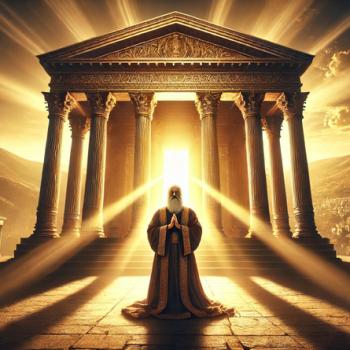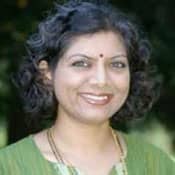As Outreach co-chair at the Bharatiya Temple of Metropolitan Detroit, I am often called to host visitor groups—from high schools, colleges, churches, and other organizations—who come to know more about our temple, our practices, and our beliefs. It is always a pleasure to offer visitors an insight into being an American Hindu, since it is a simple way to show that in spite of our differences, we can together support the concept of pluralism. I can also share the experience of being a Hindu in an American setting, where I am a religious minority, and in an Indian setting, where I lived for over a decade and visit frequently. One thing that I find similar—and troublesome—in both countries is the use of the word "idol" in referring to the sacred: the deities installed in the temples, found in Hindu homes, and a critical part of the Hindu religious culture.
While "idol" has one definition that is fairly accurate—an image or other material object representing a deity to which religious worship is addressed—the etymology, especially as used in a Christian context, is that these idols are "false gods." In fact, a secondary definition from dictionary.com says an idol is "a mere image or semblance of something, visible but without substance, as a phantom." But as I know from the millions of people who line up to have darshan -- holy vision—at temples around the world, the deities in Hindu temples are far from phantoms.
In order to better understand deities and darshan, I did some research on what exactly makes a temple deity so sacred. A few years ago, I was the editor of the temple's commemorative brochure, celebrating the twenty-fifth anniversary of the prana pratishta of the deities at our Temple. Prana in Sanskrit is "breath" and pratishta is "establishing." Our head priest, Brahmasri V. Janaki Rama Sastry, had performed the installation rituals—the prana pratishta puja—to bring the statues to life. I discovered from discussion with him that darshan is like an epiphany—an intuitive perception of or insight into the reality or essential meaning of something. There is a sacred contract established through these ancient Vedic prayers and rituals, between the seeker and the deity, somewhat like the contract between a Jewish congregation and the Torah that is wedded to them. Discoveries like these deepen my appreciation of my faith tradition, and inform my lectures, be it to guests at the temple or audiences at interfaith panels.
Discussions with my father, a writer and philosopher, empower my understanding of things divine as well. He was there to explain what it meant to be a Hindu in America back in the '70s, when there was no temple, no priest, no significant Hindu community to be a part of. He introduced me to intellectuals such as S. Radhakrishnan, the first President of India, whose Eastern Religions and Western Thought,published by Oxford University Press in 1939, sought to connect the two hemispheres in which we live. And a larger-than-life statue of Swami Vivekananda, the first Hindu to speak to a large audience at the Chicago World Fair at the first Parliament of World Religions, stands before the entrance to the Temple prayer hall, the sanctuary, providing me the larger-than-life support I need to explain away the deep-seated misconceptions about Hinduism and Hindu practices.
As I host visitors to the temple, and sit on interfaith panels to explain the Hindu perspective, I am easily able to explain why "idols" is the wrong term to use, why we Hindus are not idol-worshippers, and more. When a religious education teacher of a Muslim student group emails me saying, "It would be nice for the kids to see a mandir and see the idols and perhaps even a puja," resources from the Hindu American Foundation give me a chance to provide a quick link to break down misconceptions even before they come to the temple.
But the paradox is that this same person, who is seeking to "learn from other people and cooperate with other people even if they do not follow [the same faith]," may hear other Hindus use the word idol. Most of the Hindus I interact with are from India, and I find myself having to explain to fellow ethnic Hindus that using the word idol is not a good idea. The language of the Christian colonizers and Muslim conquerors follows us Indian immigrants here to the United States; we are simply polytheists, who worship graven images and cows, and our sacred beliefs are somehow reduced. So I and my fellow Outreach members at this temple, or others from around the country, have to continue to build bridges that intellectuals and philosophers like S. Radhakrishnan and Swami Vivekananda began long before us—to explain our Eastern beliefs in a Western context.
11/17/2011 5:00:00 AM




